Shawqi Al-Maliki
Adversarial Machine Learning for Social Good: Reframing the Adversary as an Ally
Oct 05, 2023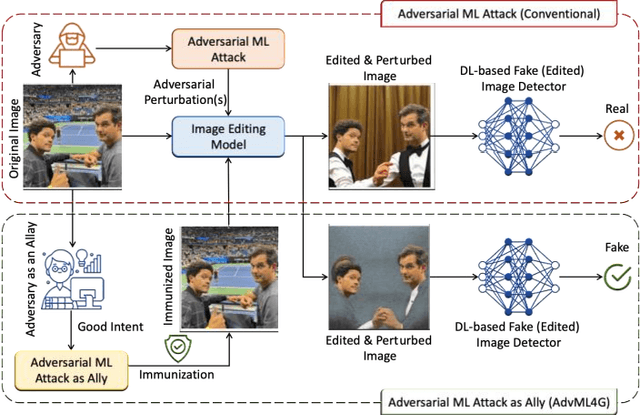
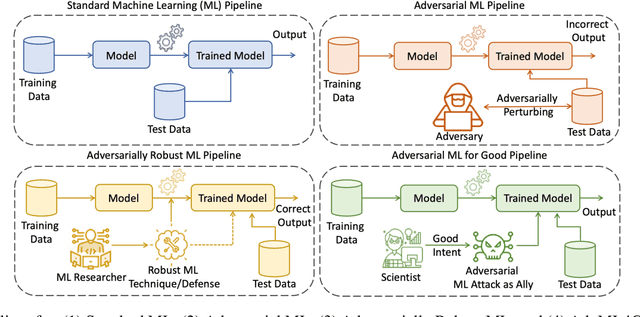

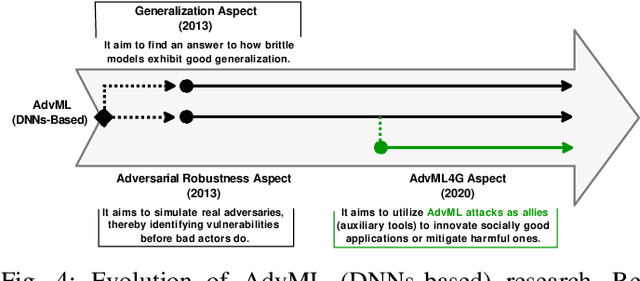
Abstract:Deep Neural Networks (DNNs) have been the driving force behind many of the recent advances in machine learning. However, research has shown that DNNs are vulnerable to adversarial examples -- input samples that have been perturbed to force DNN-based models to make errors. As a result, Adversarial Machine Learning (AdvML) has gained a lot of attention, and researchers have investigated these vulnerabilities in various settings and modalities. In addition, DNNs have also been found to incorporate embedded bias and often produce unexplainable predictions, which can result in anti-social AI applications. The emergence of new AI technologies that leverage Large Language Models (LLMs), such as ChatGPT and GPT-4, increases the risk of producing anti-social applications at scale. AdvML for Social Good (AdvML4G) is an emerging field that repurposes the AdvML bug to invent pro-social applications. Regulators, practitioners, and researchers should collaborate to encourage the development of pro-social applications and hinder the development of anti-social ones. In this work, we provide the first comprehensive review of the emerging field of AdvML4G. This paper encompasses a taxonomy that highlights the emergence of AdvML4G, a discussion of the differences and similarities between AdvML4G and AdvML, a taxonomy covering social good-related concepts and aspects, an exploration of the motivations behind the emergence of AdvML4G at the intersection of ML4G and AdvML, and an extensive summary of the works that utilize AdvML4G as an auxiliary tool for innovating pro-social applications. Finally, we elaborate upon various challenges and open research issues that require significant attention from the research community.
Continual Conscious Active Fine-Tuning to Robustify Online Machine Learning Models Against Data Distribution Shifts
Nov 02, 2022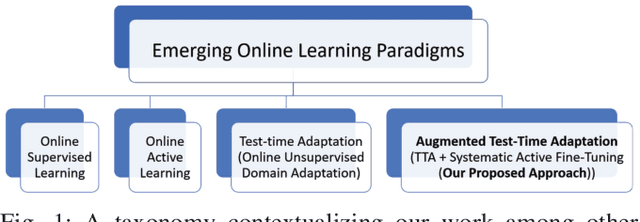
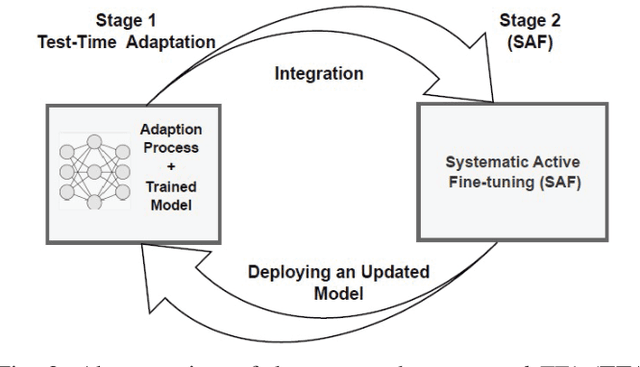
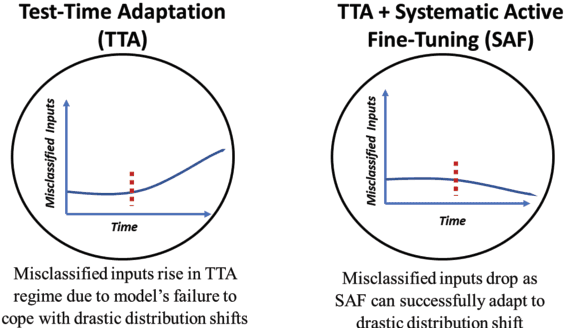
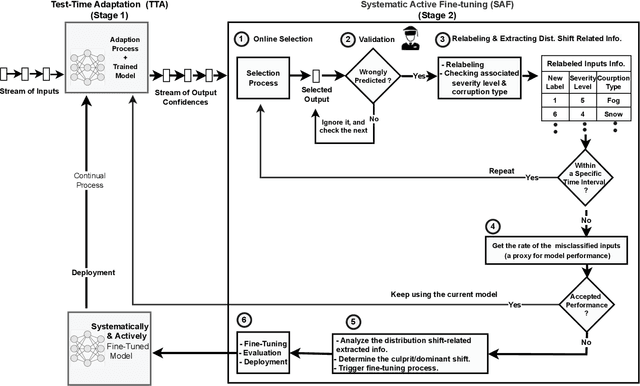
Abstract:Unlike their offline traditional counterpart, online machine learning models are capable of handling data distribution shifts while serving at the test time. However, they have limitations in addressing this phenomenon. They are either expensive or unreliable. We propose augmenting an online learning approach called test-time adaptation with a continual conscious active fine-tuning layer to develop an enhanced variation that can handle drastic data distribution shifts reliably and cost-effectively. The proposed augmentation incorporates the following aspects: a continual aspect to confront the ever-ending data distribution shifts, a conscious aspect to imply that fine-tuning is a distribution-shift-aware process that occurs at the appropriate time to address the recently detected data distribution shifts, and an active aspect to indicate employing human-machine collaboration for the relabeling to be cost-effective and practical for diverse applications. Our empirical results show that the enhanced test-time adaptation variation outperforms the traditional variation by a factor of two.
 Add to Chrome
Add to Chrome Add to Firefox
Add to Firefox Add to Edge
Add to Edge